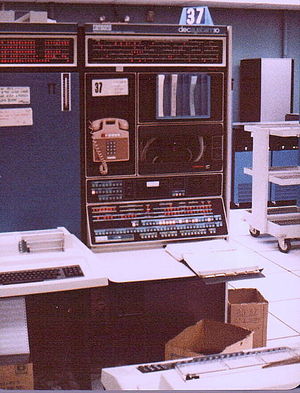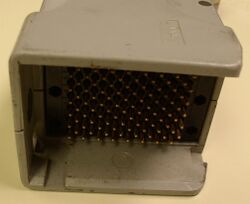KI10
| KI10 | |
| Manufacturer: | Digital Equipment Corporation |
|---|---|
| Architecture: | PDP-10 |
| Year Design Started: | December, 1969 |
| Year First Shipped: | May, 1972 |
| Form Factor: | mainframe |
| Word Size: | 36 bits |
| Logic Type: | TTL ICs |
| Design Type: | clocked synchronous |
| Clock Speed: | 1 μsec |
| Memory Speed: | 1.0 μsec (fast), 1.8 μsec (slow) |
| Physical Address Size: | 22 bits |
| Virtual Address Size: | 18 bits |
| Memory Management: | paging, 512-word pages |
| Operating System: | TOPS-10, TENEX, TYMCOM-X |
| Predecessor(s): | KA10 |
| Successor(s): | KL10 |
| Price: | US$200K (CPU), US$500K-1M (system) |
The KI10 was the second generation of PDP-10 processors (themselves, exact re-implementations of the earlier PDP-6 architecture). It was built out of TTL chips, on FLIP CHIP cards.
It was the first PDP-10 model to provide paging in its as-shipped form, with 512-word pages. It was initially released in a single-CPU version (DECsystem-1060 and -1070); a two-CPU version (DECsystem-1077) was released later.
It was used in later DECsystem-10 models, running TOPS-10. Via a series of kludges, it was also possible to run TENEX on the as-shipped hardware.
Busses
Although the KI10 CPU provided two each memory bus and I/O bus connectors (Quick Latch connectors for the former), there is only one bus of each type; the two connectors are provided for physical cabling convenience (left and right of the CPU cabinet).

